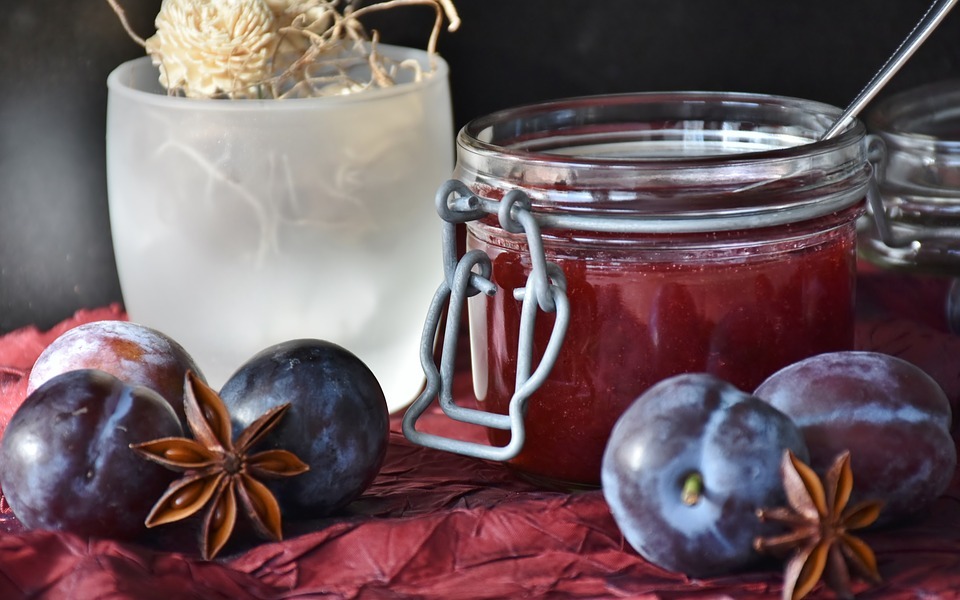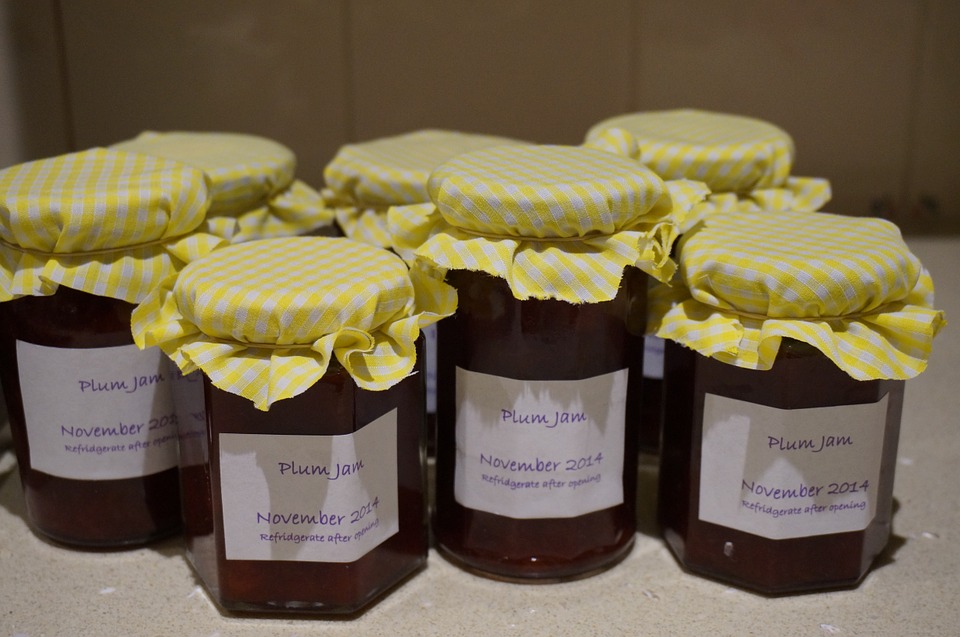This comprehensive guide explores the question of whether dogs can safely enjoy plums. We delve into the nutritional value, potential risks, and safe consumption methods for these juicy fruits. We'll also answer frequently asked questions to ensure you have all the information needed to make informed decisions about your canine companion's diet.
Part 1: The Nutritional Value of Plums

1.1. A Source of Vitamins and Minerals
Plums are a nutritious fruit packed with essential vitamins and minerals, providing a boost of antioxidants and beneficial compounds.
- Vitamin C: A powerful antioxidant that supports immune function and collagen production, contributing to healthy skin, bones, and cartilage.
- Potassium: Plays a vital role in muscle function, nerve impulses, and blood pressure regulation, promoting heart health and overall well-being.
- Fibre: Promotes healthy digestion and helps regulate blood sugar levels, aiding in weight management and preventing constipation.
- Antioxidants: Help protect cells from damage caused by free radicals, reducing the risk of chronic diseases.
1.2. Plums: A Source of Phytonutrients
Beyond vitamins and minerals, plums are rich in phytonutrients, beneficial plant compounds that offer various health benefits. These include:
- Anthocyanins: Pigments that give plums their vibrant colour, and also possess anti-inflammatory properties.
- Polyphenols: Act as antioxidants and may contribute to reducing the risk of heart disease and cancer.
- Chlorogenic Acid: This compound helps regulate blood sugar levels and may contribute to weight management.
1.3. Are Plums a Nutritional Necessity for Dogs?
While plums offer some nutritional benefits, they are not a vital source of nutrients for dogs. Dogs can obtain the essential nutrients they need from their regular dog food, which is specifically formulated to meet their dietary requirements. Therefore, plums are not considered a necessary addition to their diet.
Part 2: The Potential Risks of Plums for Dogs

2.1. The Pit: A Major Hazard
The most significant risk associated with plums for dogs is the pit. Plum pits contain amygdalin, a compound that breaks down into cyanide when ingested. Cyanide is a potent toxin that can cause serious health problems, even death, in dogs.
- Symptoms of Cyanide Poisoning: Symptoms of cyanide poisoning in dogs can include rapid breathing, panting, dilated pupils, weakness, tremors, seizures, and even coma.
- Even Small Amounts Can Be Dangerous: It's important to note that even small amounts of cyanide can be dangerous for dogs, and the severity of poisoning depends on the size of the dog and the amount of pit ingested.
2.2. The Risk of Choking
While not directly related to toxicity, the hard pit poses a choking hazard. If swallowed whole, the pit could become lodged in the dog's throat or digestive tract, causing severe discomfort and potentially requiring veterinary intervention.
2.3. Other Potential Risks
Besides the pit, there are other potential risks associated with plums:
- Gastrointestinal Upset: Plums, particularly in large quantities, can cause vomiting, diarrhoea, and stomach cramps in dogs due to their high fibre content and the difficulty of digesting the skin.
- Sugar Content: Plums are relatively high in sugar, which can contribute to weight gain, dental issues, and even pancreatitis in dogs, especially in those predisposed to these conditions.
- Allergic Reactions: Some dogs may be allergic to plums, experiencing symptoms like itching, swelling, or difficulty breathing. If you notice any signs of an allergic reaction, stop feeding plums and consult a veterinarian immediately.
Part 3: Can Dogs Eat Plum Skin?

3.1. The Skin: A Potential Problem
The skin of plums can be difficult for dogs to digest and may cause gastrointestinal upset, leading to discomfort and potential digestive issues.
3.2. Skinless Plums: A Safer Option
Offering only the flesh of the plum, without the skin or pit, minimises the risk of digestive issues and allows your dog to enjoy the fruit's sweetness safely.
Part 4: Can Dogs Eat Plum Juice?
4.1. Moderate Amounts are Fine
In moderate quantities, plum juice is generally safe for dogs. However, it's crucial to choose unsweetened plum juice and avoid adding any artificial sweeteners or additives.
4.2. A Treat, Not a Meal
Remember, plum juice should be given as an occasional treat, not a regular part of your dog's diet.
Part 5: How to Feed Plums to Your Dog Safely
5.1. Always Remove the Pit
The first and most important rule is to always remove the pit before offering plums to your dog. Never let your dog chew on the pit or swallow it whole.
5.2. Cut the Plum into Small Pieces
To prevent choking hazards and aid digestion, cut the plum into small, bite-sized pieces.
5.3. Introduce Gradually
If you are introducing plums for the first time, start with a small amount and monitor your dog's reaction. If they show no signs of adverse reactions, you can gradually increase the amount.
5.4. Keep it as a Treat
Plums should be given as a treat, not a meal replacement. A few small pieces are sufficient to satisfy your dog's cravings.
5.5. Choose Organic Plums When Possible
Organic plums are less likely to contain harmful pesticides or herbicides, making them a safer option for your dog.
Part 6: Signs of Plum Toxicity in Dogs
6.1. Be Vigilant and Seek Veterinary Attention
If you suspect your dog has ingested a plum pit or consumed large quantities of plums, it's crucial to monitor their behaviour and watch for any signs of toxicity.
6.2. Symptoms to Watch For
Signs of plum toxicity can include:
- Vomiting
- Diarrhoea
- Abdominal pain
- Weakness
- Difficulty breathing
- Tremors
- Seizures
- Excessive salivation
- Rapid heartbeat
- Dilated pupils
- Loss of consciousness
6.3. Immediate Veterinary Care
If you notice any of these symptoms, seek veterinary attention immediately. Prompt treatment can significantly improve your dog's chances of a full recovery.
Part 7: FAQs
7.1. Can Dogs Eat Dried Plums?
Dried plums, or prunes, are generally safe for dogs in moderation, but they are higher in sugar than fresh plums. Choose unsweetened prunes and remove any pits.
7.2. Can Puppies Eat Plums?
It's best to avoid giving plums to puppies as their digestive systems are still developing, and they are more susceptible to digestive upset.
7.3. Can Dogs Eat Plum Leaves?
Plum leaves can be toxic to dogs. They contain compounds that can cause gastrointestinal upset, weakness, and even kidney failure. Keep them away from your dog.
7.4. How Often Can Dogs Eat Plums?
Plums should be given as an occasional treat, not a regular part of your dog's diet. A few small pieces once or twice a week are sufficient.
7.5. What Fruits Are Safe for Dogs?
Other safe fruits for dogs include apples (without the core and seeds), bananas, blueberries, strawberries, and melons (without the rind). Always choose fresh, ripe fruits, and avoid giving them any sugary treats.
7.6. Can Dogs Eat Plum Jam?
Plum jam often contains added sugar and preservatives, which are not good for dogs. It's best to avoid giving plum jam to your dog.
Part 8: Conclusion
While plums can be a tasty treat for dogs, they should be given in moderation and with proper preparation. Always remove the pit before offering plums to your dog, and be mindful of their potential for gastrointestinal upset. By following these guidelines, you can help ensure your canine companion enjoys a safe and delicious treat.
Everyone is watching
-

Can Dogs Eat Bananas? A Guide to Safe Treats
DOGS & PUPPIESThis comprehensive guide will delve into the world of canine nutrition, focusing on the popular question: can ...
-

Can Dogs Eat Oranges? (Is It Safe or Toxic?)
DOGS & PUPPIESThis article delves into the question of whether dogs can safely consume oranges. We'll explore the nutrition...
-

Can Dogs Eat Grapes? The Shocking Truth About This Fruit
DOGS & PUPPIESThis article delves into the controversial topic of grapes and dogs, exploring the potential dangers associate...
-

Why Do Dogs Eat Poop? Understanding Coprophagia in Dogs
DOGS & PUPPIESThis article delves into the perplexing phenomenon of coprophagia, the act of eating faeces, in dogs. We explo...
-

Can Dogs Eat Shrimp? A Guide to Safety and Risks
DOGS & PUPPIESThis comprehensive guide dives into the world of shrimp and dogs, exploring the potential benefits and risks a...
